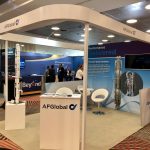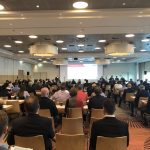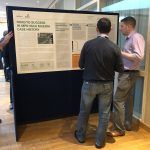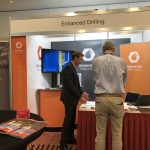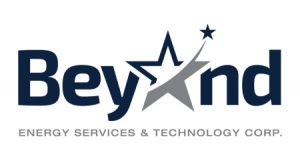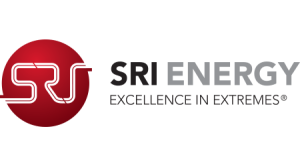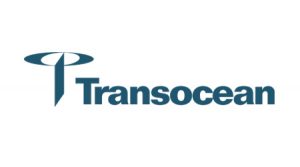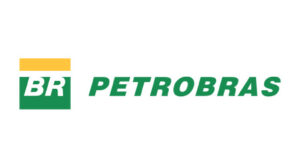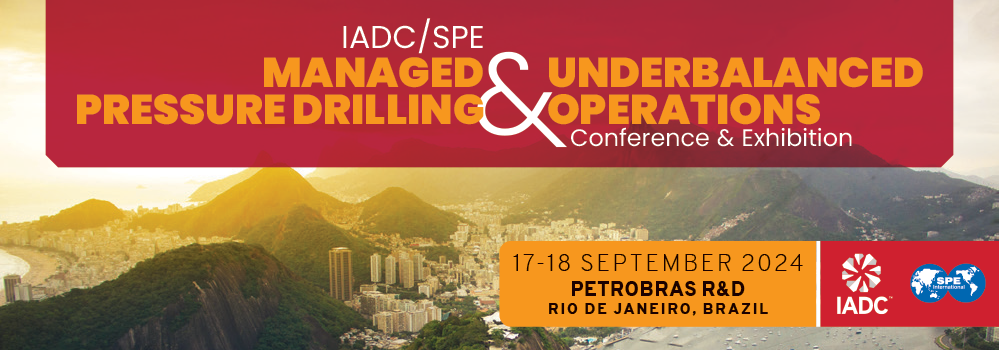
SPE and IADC are pleased to announce the IADC/SPE Managed Pressure Drilling & Underbalanced Operations Conference & Exhibition. Technologies designed to control annular pressure during drilling, inclusive of Underbalanced Drilling, Managed Pressure Drilling and Dual Gradient Drilling are being used in many forms around the world. UBD continues to maximize reservoir performance, while MPD techniques spanning onshore performance drilling and offshore deep and shallow water prospects serve to enhance drilling safety and minimize NPT. Once considered a futuristic technology, DGD is now a reality with numerous wells drilled, and many exciting prospects on the horizon. New applications of these drilling practices take place every year, and their frequency continues to grow. This conference is a world recognized forum to help the energy industry better understand the technology and the effective, safe utilization of the various applications of UBD, MPD and DGD.
Photos From Last Event
2023 Event Demographics
Registrants by Job Title
- Management
- Training/Education
- Quality, Health, Safety & Environment
- Drilling & Completion Engineer
- Geologist/Geophysicist
- Company Owner/Corporate Officer
- Completion Engineer
- Drilling and/or Completion Operations
- Drilling Engineer
- Student
Delegates
Exhibitors
Registrants by Location
- Registrants
Registrants by Company Type
- Equipment Manufacturer
- Government
- Independent Oil Producer
- Land Drilling Contractor
- Land Well Servicing Contractor
- Land/Offshore Well Servicing Contractor
- Major Oil Producer
- National Oil Company
- Offshore Drilling Contractor
- Oilfield Service/Consultant
- Training
We thank you for your support!
The International Association of Drilling Contractors (IADC) is a non-profit organization. Income from this event will be invested back into other IADC initiatives we develop to serve the drilling industry to connect, share knowledge, tackle common problems and develop solutions to critical issues in different parts of the world. By participating in an IADC event you will be improving and supporting your own industry.
IADC provides web links as a member service. IADC does not warranty or endorse the accuracy or reliability of any of the information, content, or advertisements contained on websites linked to IADC.org or any of its subsidiary pages.
Venue & Hotel
Venue
Petrobras R&D
Address Av. Horácio Macedo, 950, Cidade Universitária, Rio de Janeiro, RJ, 21941-915, Brazil
Hotel
JW Marriott
Address Av. Atlântica, 2600, Copacabana, Rio de Janeiro, RJ, 22041-001, Brazil
Phone +55 21 2545-6500
Fax +55 21-2545-6555
Negotiated Room Rate $167
Single/Double Occupancy
*Discounted room block rate expires on Tuesday, 16 July 2024. Please make your room reservations directly with the hotel prior to cut-off date.
Registration Information
Press Policy
Complimentary press registration is limited to one (1) person per company. This individual must be a titled editor, writer, reporter or other bona fide editorial representative of a legitimate industry or consumer publication. Publishers and sales and marketing specialists are excluded from this complimentary registration practice and must pay the full conference registration fee to attend an event.
No unauthorized photos, videos or recording allowed.
Recording in any form (audio, video, still photography, etc.) of presentations and/or speakers during sessions, poster presentations, workshops, etc., without the express written consent of IADC and the party to be recorded is strictly prohibited. *Those who do not comply with the Recording Equipment/Photo policy may be asked to leave the premises and barred from receiving complimentary press registration for future IADC events.
Press registration must be received 1 week prior to the event to ensure entrance. Members of the press will be identified with a green press ribbon attached to their name badge.
Need Help? registration@iadc.org / + 1.713.292.1945
Conference Program
Tuesday, 17 September
7:15 am Registration, Coffee Service & Exhibit Viewing Lobby Foyer & Breezeway
7:30 am Speaker Briefing (Speakers, session chairs & moderators only) Auditorium
8:15 am Welcome, Introduction & IADC UBO/MPD Committee Update Auditorium
- Andre Alonso Fernandes, Chair, IADC UBO/MPD Committee; Petroleum Engineer, Petrobras
8:30 am Case Studies
Session Chair: Roger VanNoort, DW MPD Implementation Team Lead, Shell
First Application of Managed Pressure Drilling (MPD) in a Carbon Capture & Storage (CCS) Project: Essam Sammat, Asia MPD Product Line Manager, Weatherford, Hazlan Abdul Hakim, Rahimah Abdul Halim, Petronas
The presentation will start with a background of the project & CCS. All the challenges to drill the injector wells in the depleted storage carbonate reservoir such as narrow margin and total losses will be highlighted along with engineering work & plans to solve the issues. Actual results will be presented post drilling along with the lessons learned and conclusions.
MPD Deepwater Drilling: A Case Study of MPD Surface Back Pressure Implementation for a Sidetrack Exploration Well in the Gulf of Mexico: Romar A Gonzalez Luis, Technology Development Engineer & Well Operations, Andre Taques, Nolan Scott, German Guzman, Blade Energy Partners, Ronald Hapoff, Elie Meyer, Murphy Oil Corporation (SPE 221443)
Managed Pressure Drilling (MPD) proved instrumental in overcoming pressure management challenges during the sidetrack deepwater exploration well in the Gulf of Mexico. With conventional methods halted due to issues like losses and ballooning, MPD was deployed to address these operational hurdles. Despite unplanned events, the sidetrack with three casing strings reached the target depth on schedule. MPD was seamlessly integrated to acquire crucial subsurface data and manage operational complexities. Techniques for real-time pressure estimations were successfully used to obtain critical downhole information at decision point stages. This paper provides a detailed account of MPD design and operational challenges, including MPD’s role in ECD/mud-weight management, tripping strategies, and regulatory compliance, offering valuable insights and lessons learned for deepwater exploration.
MPD Helped Successfully Drill an Eastern European Well to TD After Multiple Failed Sidetracks in a Formation Fraught with Wellbore Instability and Formation Pressure Uncertainties: Omer Kaldirim, MPD Supervisor, Sagar Nauduri, Gildas Guefack, Robert Howell, Darin Fisher, Pruitt Tool & Supply, Pete French, Shell, Craig Leggett, Blade
A case study on how MPD enabled an exploration well to be successfully drilled to TD with formation pressure uncertainties and borehole breakout, with minimal mud losses, and 0 choke related NPT. The paper discusses MPD engineering planning and field execution to handle formation pressure changes and borehole breakout, along with choke performance as it relates to sudden pressure spikes and handling cuttings and cavings at the choke.
10:00 am Coffee Service & Exhibit Viewing Breezeway
10:30 am Human Factors & Training
Moderator: Mike Vander Staak, Product Manager, Managed Pressure Drilling, Halliburton
- Ivan Sales, MPD Engineer, Petrobras (SPE 221426)
- Matthew Kvalo, P.E., VP of Engineering and Technology, Martin Duarte, Edward Laird, Stasis Drilling Solutions (SPE 221435)
- Helio Santos, President, Erdem Catak, SafeKick, Nathan Stiers, Diamond Offshore
- Robert Howell, MPD Technical Advisor, Zane Allen, Nicholas Digiacomo, Corey Vines, Pruitt MPD (SPE 221432)
Noon Lunch & Exhibit Viewing Breezeway
1:30 pm Non-Conventional MPD Operations
Session Chair: Matt Kvalo, VP Technology & Engineering, Stasis Drilling
Managed Pressure Cementing in deepwater environment, evolving from saving the well with perfectly executed challenging primary cementing operations to bring back wells to productive life with state-of-the-art remedial cementing jobs on controlled pressure: Ben Kotara, Drilling Engineer, Beacon Offshore Engineering Jon Thain, Ryan Brinkley, Transocean, Clayton Christensen, Blade Energy, Maurizio Arnone, Pier Alvarado, Weatherford (SPE 221446)
A summary of the efforts, lessons learned, procedures, and practices worked together between service providers (MPD and Cementing), Operator, and Rig contractor to optimize the Managed Pressure Cementing process for our common operations in deepwater in extreme narrow operating scenarios, saving $35MM on possible remedial jobs as well as moving the technique to abandoned wells with unsuccessful primary cementing in complicated geopressure regimes and provide an MPD solution for the remedial cementing operation and bringing the well back to required local regulations.
MPD well control during non-drilling operations: Carlos Sanguinetti, DPM Drilling Engineer, Dongyu Su, Daniel Atehortua, Celio Rossetto Soares, SLB, Santiago Callerio, The University of Texas at Austin (SPE 221436)
This study aims to advance the understanding of influx management when using MPD during non-drilling operations such as tripping, reaming, mud displacement, or running liners. While industry efforts have produced well-prepared guidelines for drilling operations like IMEs and MPD Matrix, there is a noticeable gap in providing guidelines for well control using MPD during off-bottom operations. The focus of this work is to analyze the risks and consequences associated with controlling kicks off-bottom with the MPD system, exploring potential solutions and considering both false alarms and true kicks into the wellbore.
2:30 pm Coffee Service & Exhibit Viewing Breezeway
3:00 pm Riser Gas Handling
Session Chair: Helio Santos, President, SafeKick
Handling Gas-In-Riser – Part I: Fundamental Concepts and Calculations Underlying 2023 IADC Riser Gas Guidelines: Paul Sonnemann, SafeKick, Mario Ledes Mascarenhas Resende Teixeira, Equinor, Gavin Humphreys, Stena, Stan Christman, Pedro Cavalcanti de Sousa, Blade Energy Partners (SPE 221431)
This is Part I of a series of papers presented by the Gas-In-Riser subcommittee. This paper provides definition of terms and specifically addresses two fundamental concepts that are either little known or inconsistently applied to field operations, Riser Equilibrium and Riser Unloading. Following that, the concept of Riser Gas Tolerance (RGT) is also introduced. These concepts underly the 2023 IADC Deepwater RGH Guidelines and its RGT worksheet. The logic of related calculations (and derivation of formulae) is clarified, providing the industry with a consistent basis for evaluation or further development of practical riser gas handling procedural issues.
Handling Gas-In-Riser – Part II: Numerical Simulation of Riser Equilibrium Point (REP), Riser-Gas Tolerance (RGT) and Riser Unloading, and Validation of the 2023 IADC Deepwater RGH Guidelines Calculation Worksheet: Pedro Cavalcanti de Sousa, Technology Development Engineer, Oscar Gabaldon, Blade Energy Partners, Zhaoguang Yuan, SLB, Paul Sonnemann, SafeKick, Austin Johnson, NOV, Omer Kaldirim, Pruitt (SPE 221430)
This is Part II of a series of papers presented by the Gas-In-Riser subcommittee. This work presents a set of simulations used to estimate REP, RGT and riser unloading. Results indicate RGT are higher than expected, meaning risers can safely handle large volumes of gas without exceeding operational ratings. This holds true for existing surface equipment in many rigs and represents significant reduction in NPT while minimizing risks. Results also show that riser equilibrium is deeper in WBM, that riser unloading is more intense in WBM, and that the use of the RGT worksheet can give conservative safeguards to operations.
4:00 pm Completions
Session Chair: Helio Santos, President, SafeKick
Analysis of Primary Safety Barrier on Workover Operations using MCD on Deepwater Scenarios – Design and Execution: Roger Savoldi Roman, Technical Advisor – completinos, Andre Alonso Fernandes, Caio Nascimento Cisneiros, Ivan Mendes Sales, Renato Hugo da Silva Pereira, Rogerio Simoes Rosa, Willian Medina Ascaneo, Petrobras (SPE 221437)
This paper will describe the expansion of MCD techniques to enable a challenging workover in an intelligent completion ultradeep well. The retrieval of the completion string was made with total losses, using MCD equipment to mitigate risks. As there is no reference in the literature and regulations for MPD/MCD workover, special attention will be given to discuss workover operational aspects, that differ significantly from drilling and completions, and safety barriers assessment.
Case Study: First Deepwater Surface Applied Back-Pressure (ABP) MPD Gravel Pack Operation – Design, Execution and Lessons Learned: Juan Valecillos, MPD Wells Lead Project Engineer, Maurizio Arnone, Weatherford International Ltd, Patrick Campbell, Shell International (SPE 221439)
This study presents the challenges, planning, execution, and results of the first Deepwater Screen Running and Open Hole Gravel Pack (OHGP) operation utilizing an ABP MPD system.
5:00 pm Adjournment
Wednesday, 18 September
7:30 am Registration, Coffee Service & Exhibit Viewing Lobby Foyer & Breezeway
8:25 am Welcome & Introduction Auditorium
- Andre Alonso Fernandes, Chair, IADC UBO/MPD Committee; Petroleum Engineer, Petrobras
8:30 am Design and Optimization
Session Chair: Oscar Gabaldon, Drilling Technologies Development Manager, Blade Energy Partners
Utilizing “Digital Surface” for enhanced safety and efficiency on a challenging wildcat exploration well and extreme HPHT production wells in Norway: Siri Sandvik, MPD Principal Technical Professional, Jan Erling Østerhus, Halliburton, Ragnar Marcelius Fredriksen, AkerBP, Martin Bulow, Noble
Traditionally, risks associated with wrong valve operations pose a concern. The integration of Digital Surface addresses this challenge by harvesting all available rig system signals and deploying intelligent wireless sensors to monitor valve statuses in real-time. This proactive approach provides accurate data, enhancing safety controls and significantly reducing the likelihood of operational errors. Beyond its impact on safety, this presentation highlights the practical application of Digital Surface in MPD operations. The technology dynamically displays various flow paths during MPD operations, offering a comprehensive overview of the rigs MPD circulation system. A case history from a wildcat exploration well in Norway will be presented, providing in-depth insights into how Digital Surface, with its automated monitoring and potential control capabilities, profoundly influenced safety measures and operational protocols.
Simplified Deepwater FMCD Strategy: Andre Alonso Fernandes, Petroleum Engineer, Marcos Vinicius Barreto Malfitani, Kelliton da Silva Vasconcelos, Gustavo Costa Magalhães Pena, Ivan Mendes Sales, Petrobras (SPE 221441)
MPD techniques began to be used in deep and ultra deepwater drilling since de early 2010s. The technique enabled drilling of wells with a narrow or even non-existent operational window The possibility of drilling conventionally, converting to FMCD in case of loss, allows significant time savings in the operation. This paper presents the safety and procedure analysis done to the successful adaptation for this new MPD technique implementation for deepwater depleted wells.
Controlled Mud Level Case Studies: Rudy Flores, Technical Sales Manager, Snorre Lutnes, Enhanced Drilling
Controlled Mud Level (CML) MPD is increasingly used for purposes beyond a Constant Bottom Hole (CBHP) approach. This presentation will highlight applications where CML is utilized.
10:00 am Coffee Service & Exhibit Viewing Breezeway
10:30 am MPD Equipment & Control Systems
Session Chair: Martyn Parker, Vice President – MPD Services, Pruitt
Breakthroughs in Active Rotating RCD Development: A Discussion on Technical Development and Performance Evaluation through Testing: Hunter Haeberle, Senior Systems Engineer, Katie Kotarek, Consulting Engineer, Calvin Crowdis, Product Manager, HMH (SPE 221427)
Significant advancements have been made in the development of an active rotating RCD using hyper elastic Finite Element Analysis (FEA) for rapid prototyping of the sealing element during full-scale testing and the development of a high-performing, reliable bearing system. This paper provides a comprehensive overview of an active rotating RCD, highlighting the design breakthroughs and offering valuable insights into the technology and performance evaluation of testing on a full-scale sealing element and bearing system, allowing for use in various drilling applications.
Rig Contractor’s Best Practices and Lessons Learned for Contractor Owned MPD Systems: Jon Thain, MPD Manager, Ryan Brinkley, Transocean, Linden Duong, Ian Barker, Noble Corp, Ibrahim Hal, Valaris, Maurizio Arnone, Essam Sammat, Prashant Shah, Weatherford (SPE 221438)
An effort for compiling the experiences from 3 of the major deepwater rig contractors acquiring MPD equipment and preparing their own personnel to be fully independent and capable to provide MPD at a global scale.
Results of a real time prediction model to estimate remaining life of an MPD sealing element in a deepwater well: Austin Johnson, Technology Development Manager, NOV, Nathan Stiers, Diamond Offshore, Inam Haq, BP
Key perspectives from the manufacturer, drilling contractor, and operator. The manufacturer provides a summarized history, drivers for the seal wear prediction algorithm, and an overview of the seal wear prediction algorithm. The drilling contractor perspective includes points on how the seal wear prediction algorithm has been deployed in the field and how it affects drilling operations. The final perspective from the operator includes discussion of the technology road map, how the information is used to augment and optimize the approach for drilling a section and other considerations for the well.
Noon Lunch & Exhibit Viewing Breezeway
Session Chair: Mike Vander Staak, Product Manager, Managed Pressure Drilling, Halliburton
1:30 pm Keynote Presentation: 100+ Deepwater MPD Wells Learnings: Andre Alonso Fernandes, Guilherme Siqueira Fetter Vanni, Felipe de Souza Terra, Petrobras (SPE 221429)
Key aspects of the evolution of MPD application based on the experience of drilling a 100+ wells using MPD on deepwater scenarios will be presented. Regarding the MPD evolution, a revision of the internal and external operations, through several papers and publications allows the identification of different factors that changed over the years while applying MPD on deepwater scenarios.
2:00 pm UBD
Session Chair: Mike Vander Staak, Product Manager, Managed Pressure Drilling, Halliburton
A Novel Integrated Workflow for Improved Lateral Placement in Underbalanced Coil Tubing Drilling Operations: Hussain Al Abdrabalnabi, Petroleum Engineer, Sara Abu Alsaud, Saudi Aramco (SPE 221440)
In low pressure reservoirs, underbalanced coiled tubing drilling (UBCTD) is one of the techniques used in enhancing the hydrocarbon production. Logging while drilling (LWD) tools have taken the lead in ensuring optimum placement. However, a major disadvantage in UBCTD is their lack of full LWD capabilities. The lack of LWD poses a risk of falling short of meeting the planned reservoir contact. This poster demonstrates improvements in lateral placement by utilizing key operational indicators from offset wells data to maximize reservoir contact and enhance hydrocarbon recovery from a well.
2:30 pm Coffee Service & Exhibit Viewing Breezeway
3:00 pm Well Control & Well Integrity
Session Chair: Adam Keith, Product Champion-Managed Pressure Drilling, Patterson-UTI Drilling Company
Analysis of the World’s First Influx Management Case History with Controlled Mud Level MPD: Trey Hargett, Wells Supervisor, Roger Van Noort, Shell, Dave Smith, Hunter Craig, Enhanced Drilling
The operating company has partnered with the service provider to build and deploy a system that can safely circulate out a small influx up the riser rather than the choke and kill lines. This paper provides analysis of the world’s first influx management event with the CML system and a description of the modifications to the CML system to allow performance of influx management.
UBO Efficiency: The Art of Building Resilience Through an Operational Buffer While Flow Drilling: Mohamad Almasri, MPD Engineer, Andy Thi, John Breuer, Beyond Energy (SPE 221434)
Drilling operations face evolving challenges due to environmental changes and complex reservoirs. Despite safety precautions, certain wells are still deemed dangerous, underscoring the importance of technical solutions. Flow drilling, involving continuous gas circulation, is a common but potentially hazardous practice in the industry. In unconventional plays, UBO offers benefits such as continuous well control and faster response times to manage the pressure in the well and continue drilling safely. This paper explores the advantages and drawbacks of creating an operational buffer during flow drilling, emphasizing its relevance to UBO projects and the need to consider well conditions and drilling judgment carefully.
First deepwater MPD deployment on the rig for the first exploration well in the very commercially strategic Mexico’s Perdido fold belt and an early small, detected influx circulated out entirely with MPD to surface, description of a well planned and executed: Tyler Smith, Deepwater PS Project Manager, Roger van Noort, Nathan Tuckwell, Shell, Maurizio Arnone, Isabel Poletsky, Prashant Shah, Weatherford, Linden Duong, Noble Corp (SPE 221448)
The importance of influx detection when using an MPD, and how well control is enhanced by being able to immediately increase the SBP controlling the influx and circulating it out through the MPD system. Two exploration wells were safely drilled using MPD Techniques optimizing the overall drilling operation, including mud weight management, accurate annular pressure control while drilling, on connections, tripping, and mud displacements; the early kick and losses detection capabilities were also a critical component when drilling these two wells, especially during the first well when two kicks were identified, controlled, and circulated out using the MPD system.
Management of Crossflow Events in High pressure, Deep Disposal Wells Using MPD Techniques: Gerald Yao-Dablu, MPD Specialist, Scott Hoekstra, Beyond Energy Services and Technologies (SPE 221428)
Partial or Complete loss of circulation experienced in one formation after pore pressure has been established in another formation during drilling often leads to a surface well control event unless circulation is promptly reinstated. However, when there is crossflow between the pore pressure zone and the loss zone, it is important to discuss how this event is managed.
5:00 pm Closing Remarks & Adjournment
- Andre Alonso Fernandes, Chair, IADC UBO/MPD Committee; Petroleum Engineer, Petrobras
Unassigned Papers of Note:
These papers will be invited to participate in a poster session. Should a scheduled paper become unavailable, one of the unassigned papers will be accepted for presentation. In addition, these presentations will be made available in the conference proceedings, should the author so desire.
Managed Pressure Wireline Operations from a Drillship: Nick Ward, Managed Pressure Drilling Manager, John Mitchell, John Smith, Stena Drilling
For many Operators, the performance of Managed Pressure Wireline operations from a floating rig is considered complex, expensive and time consuming. The presentation will outline how the Drilling Contractor has been able to deliver Managed Pressure Wireline operations for multiple operators safely, efficiently and with minimized cost since 2017. The presentation will detail the key considerations, equipment and procedures used in the delivery of Managed Pressure Wireline operations as well as key lessons learned to encourage further utilization throughout the industry.
Automating Influx Management Envelope (IME) Generation through Cloud-Based Solutions: Lei Zhou, Principal Well Control Engineer, Bjoern-Tore Anfinsen, Anders Gilje, Yaxin Liu, Yahya Hashemian, Zhaoguang Yuan, SLB (SPE 221442)
This research focuses on automating the generation of Influx Management Envelopes (IME) for MPD through a cloud-based solution, aiming to simplify the process for routine application in drilling operations. The integration of cloud-based solutions and parallel computing enhances the efficiency of IME generation by parameterizing various influx scenarios.
Productivity Comparison of Different Completion & Stimulation Strategies with Underbalanced Coiled Tubing Drilling in Gas Carbonate Reservoirs: Mohammed AlSaad, Supervisor Reservoir Management, Imad Brohi, Saudi Aramco (SPE 221445)
The presentation will feature specialized normalized plots and numerical simulation of productivity index (PI) exhibited after testing of gas wells completed with the different completions of multi-stage fracturing, underbalanced coiled tubing drilling, and vertically drilled and stimulated wells. The presentation will also feature the key contributing factors driving these results from the minimized formation damage through underbalanced drilling nitrified fluids to the high steering flexibility enabled by coiled tubing and completion approach of underbalanced drilled wells.
Conference Program Committee
- Adebowale Solarin, Noble Corporation
- Adam Keith, Patterson-UTI Drilling Company
- Ahmed Shimi, Weatherford
- Ali Sadat, Opla Energy
- Andre Fernandes, Petrobras
- Billy Walker, NOV
- Børre Fossli, Gradient Drilling Solutions
- Calvin Holt, DrillDocs Company
- Dave Smith, Enhanced Drilling
- Gavin Humphreys, Stena Drilling
- Guilherme Vanni, Petrobras
- Helio Santos, SafeKick
- Inam Haq, BP
- Jon Thain, Transocean
- Leiro Medina, Beyond Energy
- Martin Culen, Kelda Dynamics
- Martyn Parker, Pruitt
- Matt Kvalo, Stasis Drilling Solutions
- Mike Vander Staak, Halliburton
- Oscar Gabaldon, Blade Energy Partners
- Roger van Noort, Shell
- Tamela Claborn, SPE
Exhibition Information
Cost for each 3m x 3m space is $2,250. IADC membership required, details at https://iadc.org/membership.
Each 3m x 3m space will be set with a table, two chairs and access to electricity. With the space, you receive one complimentary conference registration and up to two additional registrations at half price. No refunds for cancellations will be issued.
-
Exhibitors can set-up after 3:00 pm on Monday, 16 September. All spaces must be completely set up by 6:30 am on Tuesday, 17 September.
-
You may tear down your space after the last break concludes on Wednesday, 18 September.
-
The exhibitor space is a 3m x 3m area. It will be set with a 6′ skirted table and two chairs with access to electricity. Please do not exceed 3m across, as the space in the exhibition area will be limited.
-
Wall space for signs/banners will not be available. All signs/banners must be affixed to the table or free standing.
-
All personnel working the exhibition must be registered. With your space, you will receive one complimentary registration and up to two additional registrations for half price or $375.
Exhibitions at IADC events will be limited to showcasing products and services that advance technology, competency or HSE. Exhibitions centered on recruitment or employment should not take space at IADC events.
Exhibition space is sold on a first come, first served basis! Please complete and return the Letter of Agreement below to reserve your space.
Interested? Contact lori.gagula@iadc.org / +1 713.292.1945
Sponsorship Information
There are five levels of sponsoring: Diamond sponsors, Platinum Sponsors, Gold Sponsors, and Silver Sponsors. Event sponsorships are also available and will be categorized by monetary contribution with the appropriate level of sponsorship. Please find the benefits of the sponsor packages below. The conference sponsor will receive high profile recognition before, during and after the conference. IADC membership required to be eligible.
Diamond
$25,000
(10 Comps*)
Platinum
$15,000
(5 Comps*)
Gold
$10,000
(3 Comps*)
Silver
$5,000
(1 Comp*)
Event
AVAILABLE
See Below
Event
Reception $6,500
(2 Comps*)
Event
Luncheon $6,500
(2 Comps*)
Event
Audio/Visuals $5,000
(1 Comp*)
Event
Coffee Breaks $5,000
(1 Comp*)
*Comps refer to number of complimentary registrations.
Interested? Contact lori.gagula@iadc.org / +1.713.292.1945



